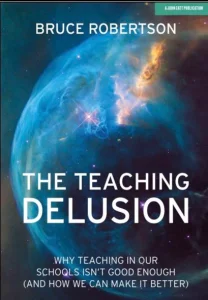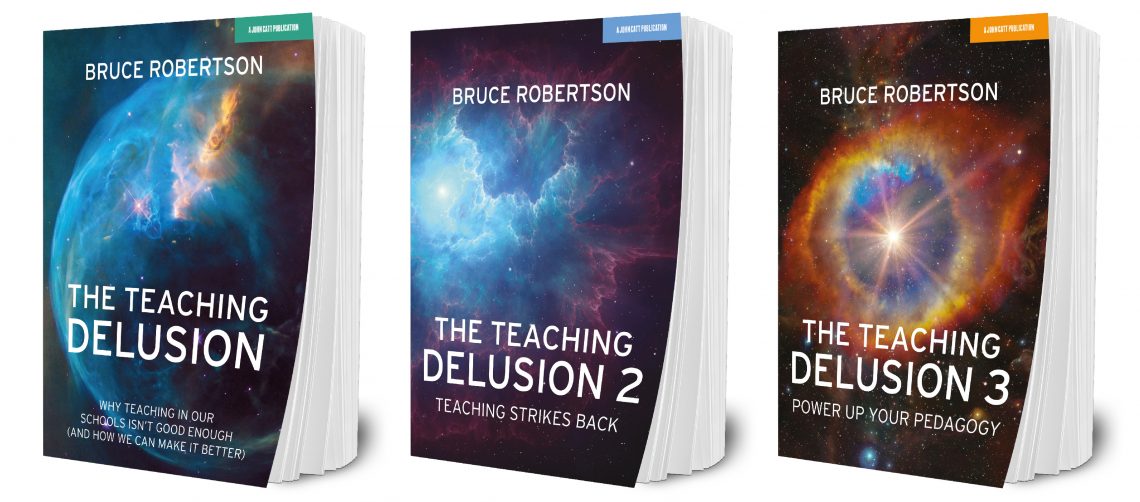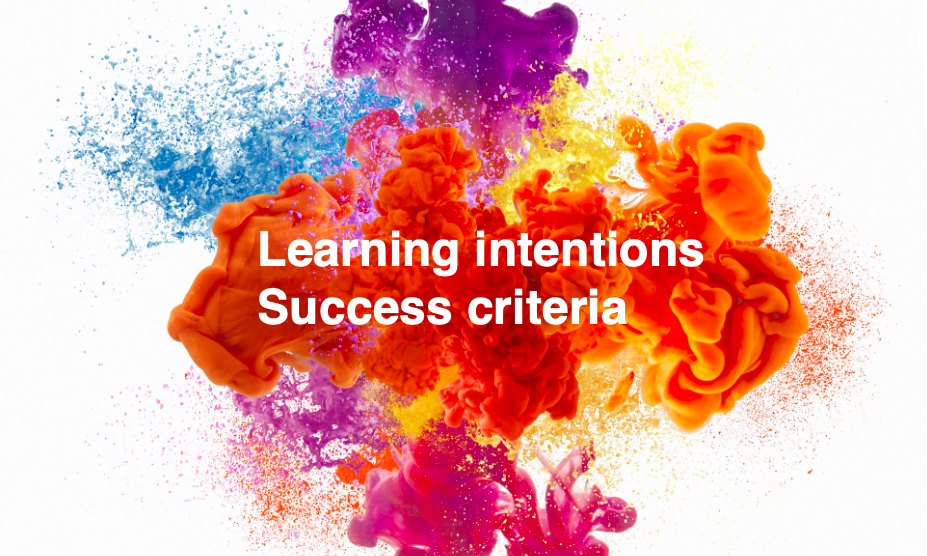Teachers across the country are tying themselves in knots with learning intentions and success criteria. Some are using them well; some are not. Some aren’t using them at all.
So why isn’t everyone using them and using them well? A significant factor it is because many teachers are unsure about what these should look like. This Five Minute Guide aims to address that.
Learning Intentions
Learning intentions are statements which summarise the purpose of a lesson in terms of learning. A useful acronym is WALT: ‘What we Are Learning Today’.
In writing them, it is usually useful to include the terms ‘know’, ‘understand’ or ‘be able to’, which helps communicate that the learning will relate to knowledge, understanding or skills, respectively.
An example might be:
We are learning about the structure of an atom, specifically to know about:
- The sub-atomic particles which make up atoms
Over the course of several lessons, the class will be learning about the structure of an atom. For that reason, this statement will appear as part of the learning intention in lessons which follow. In this particular lesson, the specific focus is on the sub-atomic particles which make up atoms. The learning intention for the next lesson two lessons might be:
We are learning about the structure of an atom, specifically to understand:
- Nuclide notation
- The electron arrangements of the first 20 elements
Because every lesson is about learning, every lesson should have a clear learning intention, whether this be for students to learn something new, to consolidate their learning (through practice or revision) or to demonstrate their learning.
Learning intentions should make clear what students will be learning about, not how this learning will be achieved, that is, to the activities and tasks of the lesson. For example, ‘Complete all of the questions on page 45 of your textbook’ is not a learning intention – it is a statement about an activity. Learning intentions should be about what is to be learned.
Communicating learning intentions
It is important that learning intentions are clearly communicated with students. Good practice is to do this both verbally and visually. However, saying this is very different from saying that students need to copy down the learning intentions (and success criteria) for lessons. Some schools insist that teachers get students to do that, but students learn nothing from doing so and it just wastes valuable learning time.
Revisiting learning intentions
It can be useful to revisit learning intentions during lessons, reminding students of the learning focus. By the end of the lesson, something should have changed: students should know something that they didn’t before, they should be able to do something that they couldn’t before, or they should have improved at something. Every lesson should impact on learning; every lesson should count.
Success Criteria
Success criteria relate to the evidence you are looking for to determine if students have learned what you intended. A useful acronym is WILF: ‘What I am Looking For’.
Success criteria can take different forms, including:
- ‘I can…’ statements
- Key features
The principal purpose of success criteria is to support assessment and feedback. When assessing learning, it isn’t enough for a teacher to ask, ‘Have you learned this?’ and then just to accept ‘yes’ as an answer. There needs to be evidence of learning; students need to prove it. Success criteria can make clear what that evidence should be. In this way, success criteria become tools to support teacher assessment, peer assessment and self-assessment. Without being clear about what you are looking for, meaningful assessment and feedback is not possible.
‘I can…’ statements
When success criteria are written as ‘I can…’ statements, they include verbs which make clear the evidence required to demonstrate learning. Rather than being about ‘knowing’, ‘understanding’ or ‘being able to’ – which is the language of learning intentions – they should be about what you are looking for in order for students to demonstrate that they have learned what was intended.
If students can ‘state’, ‘write’, ‘describe’, ‘explain’ or ‘draw’, this can evidence learning. Saying that ‘I know’, ‘I understand’ or ‘I am able to’ doesn’t evidence learning. While it might be true, it isn’t evidence. Success criteria should make clear what evidence of learning needs to be produced.
To appreciate this, consider the learning intention used earlier:
We are learning about the structure of an atom, specifically to know about:
- The sub-atomic particles which make up atoms
Possible success criteria are:
- I can draw a labelled diagram of an atom, showing the arrangement of the three sub-atomic particles which make it up
- I can state the charge of each of the sub-atomic particles
- I can state the mass of each of the sub-atomic particles
Occasionally, I hear people argue that success criteria shouldn’t be quantified. For example, if success criteria relate to being able to identify advantages and disadvantages of something, teachers shouldn’t specify how manyadvantages and disadvantages. The rationale is that, by quantifying, you limit student learning. However, I would argue that, if success criteria are going to be used to assess learning and to guide feedback, they need to be as specific as possible. Sometimes, this will mean quantifying them. The way to get around any issue of ‘limiting learning’ is to include the phrase ‘at least’ in front of the quantity (for example, ‘I can identify at least two advantages and two disadvantages of…’)
Key features
Sometimes, rather than writing success criteria as ‘I can’ statements, they are better written as ‘key features’. This tends to be when they relate to ‘Be able to…’ learning intentions. For example, a learning intention might be:
- Be able to present data in a table
Success criteria could be that:
- It has two columns
- Each column has an appropriate heading
- Each heading has correct units
- The data has been entered correctly
- It has been drawn with a ruler
Confusing learning intentions and success criteria
A common mistake I see teachers make is that they confuse learning intentions and success criteria. Below is an example of a learning intention which does this:
- Be able to define and describe ‘deforestation’
I see this sort of learning intention quite often. In writing it, the teacher has confused the learning (which relates to deforestation) with the evidence students need to produce to demonstrate their learning. A far better learning intention would be:
- Understand what ‘deforestation’ is
This is focused on learning.
Possible success criteria could be:
- I can write a definition for ‘deforestation’
- I can describe three causes of deforestation
These are focused on evidence of learning. In checking that students understand what deforestation is, the teacher would be looking to see evidence relating to each success criterion.
Taken from The Teaching Delusion: Why Teaching In Our Schools Isn’t Good Enough (And How We Can Make It Better), published by John Catt Educational. Available at:



I had never thought about this before but, after reading your post and revisiting some original research by Vygotsky, I suspect there is no benefit to a younger child in separating the learning objective from the success criteria; indeed there may well be a strong advantage to our scaffolding function as teachers to combine them. Thank you, it made me think.
LikeLiked by 1 person